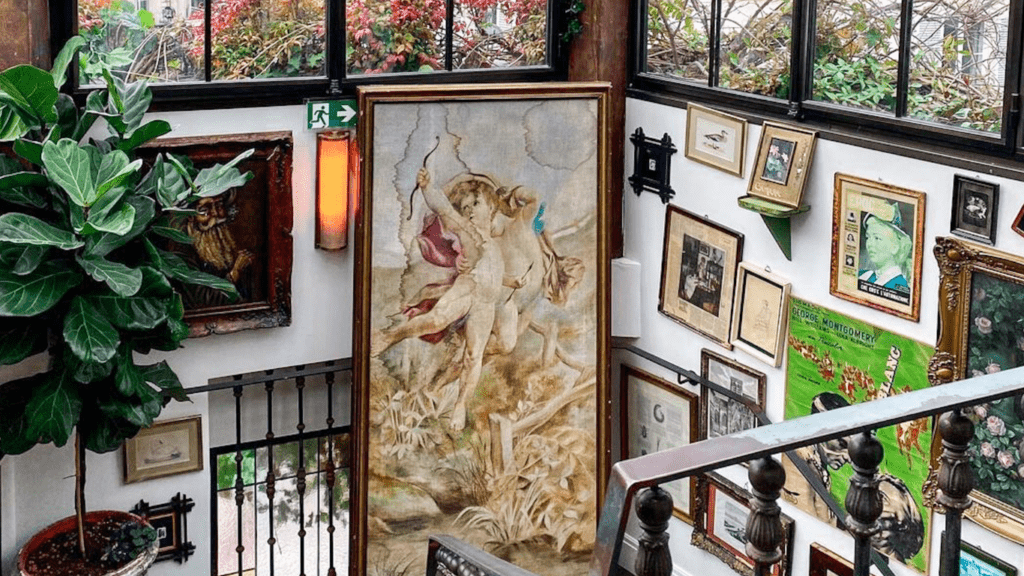The Evolution of Art Competitions
Art competitions have evolved significantly over the centuries, shaping the opportunities for artists to present their work.
Historical Overview
Early art competitions date back to ancient Greece when artists competed to produce sculptures and paintings. These contests were integral to festivals and often had religious significance, driving artists to achieve exceptional craftsmanship.
During the Renaissance, the Medici family in Florence organized competitions, commissioning works from notable artists like Michelangelo and Leonardo da Vinci. The 19th century saw the rise of national art academies, such as Paris’ Salon, that held annual competitions to establish artistic standards and trends.
Transformative Impact on Artists
Contemporary art competitions provide emerging artists with critical exposure. Winning or even participating in these contests can propel an artist’s career by providing opportunities for gallery representation, networking, and financial rewards.
For example, the Turner Prize in the UK has launched the careers of artists like Damien Hirst and Grayson Perry. The Venice Biennale serves as another influential event that can significantly impact an emerging artist’s recognition and career trajectory.
Profile of Emerging Artists
Emerging artists participating in major art competitions are transforming the creative landscape with innovative practices and resilient spirits.
Key Traits and Practices
Emerging artists exhibit distinct traits that set them apart. They’re experimental, often blending traditional techniques with modern technology, such as digital art or mixed media. They value originality, consistently pushing the boundaries of creativity.
Collaboration is another hallmark, with many artists working in collectives or communities, sharing ideas and resources to foster growth. Social engagement plays a crucial role, as these artists frequently address current socio-political issues through their work, making their art not just visually compelling but also contextually relevant.
Challenges They Face
Emerging artists encounter several challenges in their journey. Financial constraints are common, as many face difficulties in securing funding for their projects or sustaining their practice. The competition for visibility is fierce, with numerous talented individuals vying for limited exposure opportunities.
Feedback and criticism can be overwhelming for those new to the scene, demanding resilience and adaptability. Additionally, balancing commercial success with artistic integrity poses a significant challenge, as artists strive to maintain their unique vision while appealing to a broader audience.
The Role of Major Art Competitions

Major art competitions play a crucial role in advancing artists’ careers and increasing their visibility. These competitions offer platforms that elevate emerging artists and impact their professional journeys.
Platforms for Exposure
Major art competitions provide essential platforms for exposure. Events like the Turner Prize and the Venice Biennale attract global attention. Artists showcase their work to a wide audience, including critics, collectors, and galleries. This exposure leads to reviews, sales, and potential representation.
Impact on Careers
Participation in significant art competitions often impacts artists’ careers immensely. Winning or even being shortlisted brings recognition and credibility. Artists like Damien Hirst gained international acclaim through competition success. This recognition often leads to gallery representation, higher sales, and increased media coverage.
Case Studies: Breakthroughs in Recent Competitions
Major art competitions have truly transformed the careers of emerging artists. I’ll examine some notable examples.
Artists Who Made a Mark
Several artists have gained recognition through these prestigious platforms.
- Toyin Ojih Odutola’s career soared after her remarkable showing in the 2017 Whitney Biennial. Her evocative portraits, often exploring complex narratives of identity, earned her critical acclaim.
- Jesse Darling’s innovative sculptures in the 2018 Turner Prize Exhibition brought attention to themes of vulnerability and resistance, positioning them as a significant figure in contemporary art.
- Arthur Jafa won the Golden Lion at the 2019 Venice Biennale with his powerful video installation, Love is the Message, the Message is Death, highlighting African American experiences.
Analysis of Their Artistic Journey
Each artist’s journey demonstrates distinct strategies and milestones. Toyin Ojih Odutola’s meticulous approach in exploring various media and her engagement with cultural narratives facilitated her rise. She leveraged residency programs, solo exhibitions, and strategic gallery partnerships to build her portfolio.
Jesse Darling’s path involved embracing interdisciplinary practices, experimenting with mediums like:
- sculpture
- installation
- performance art
to push boundaries and attract curators’ attention. Conversely, Arthur Jafa’s breakthrough rested on his ability to capture historical and contemporary movements through powerful visual storytelling, leveraging multimedia approaches to deeply resonate with audiences.

 Anna Freehill, a key contributor to Avant Garde Artistry Hub, plays a vital role in shaping the platform’s vision. As an author and collaborator, she helps bridge the worlds of art and technology, offering insightful articles that guide artists through the rapidly evolving creative landscape. Anna’s dedication to highlighting art's therapeutic value has contributed to the platform’s focus on mental and emotional well-being through creative expression.
Her involvement in building Avant Garde Artistry Hub has been instrumental in providing valuable resources to artists seeking to enhance their careers. Whether through her writing on business strategies or her support in platform development, Anna is committed to fostering a space where artists can thrive and embrace the future of art.
Anna Freehill, a key contributor to Avant Garde Artistry Hub, plays a vital role in shaping the platform’s vision. As an author and collaborator, she helps bridge the worlds of art and technology, offering insightful articles that guide artists through the rapidly evolving creative landscape. Anna’s dedication to highlighting art's therapeutic value has contributed to the platform’s focus on mental and emotional well-being through creative expression.
Her involvement in building Avant Garde Artistry Hub has been instrumental in providing valuable resources to artists seeking to enhance their careers. Whether through her writing on business strategies or her support in platform development, Anna is committed to fostering a space where artists can thrive and embrace the future of art.